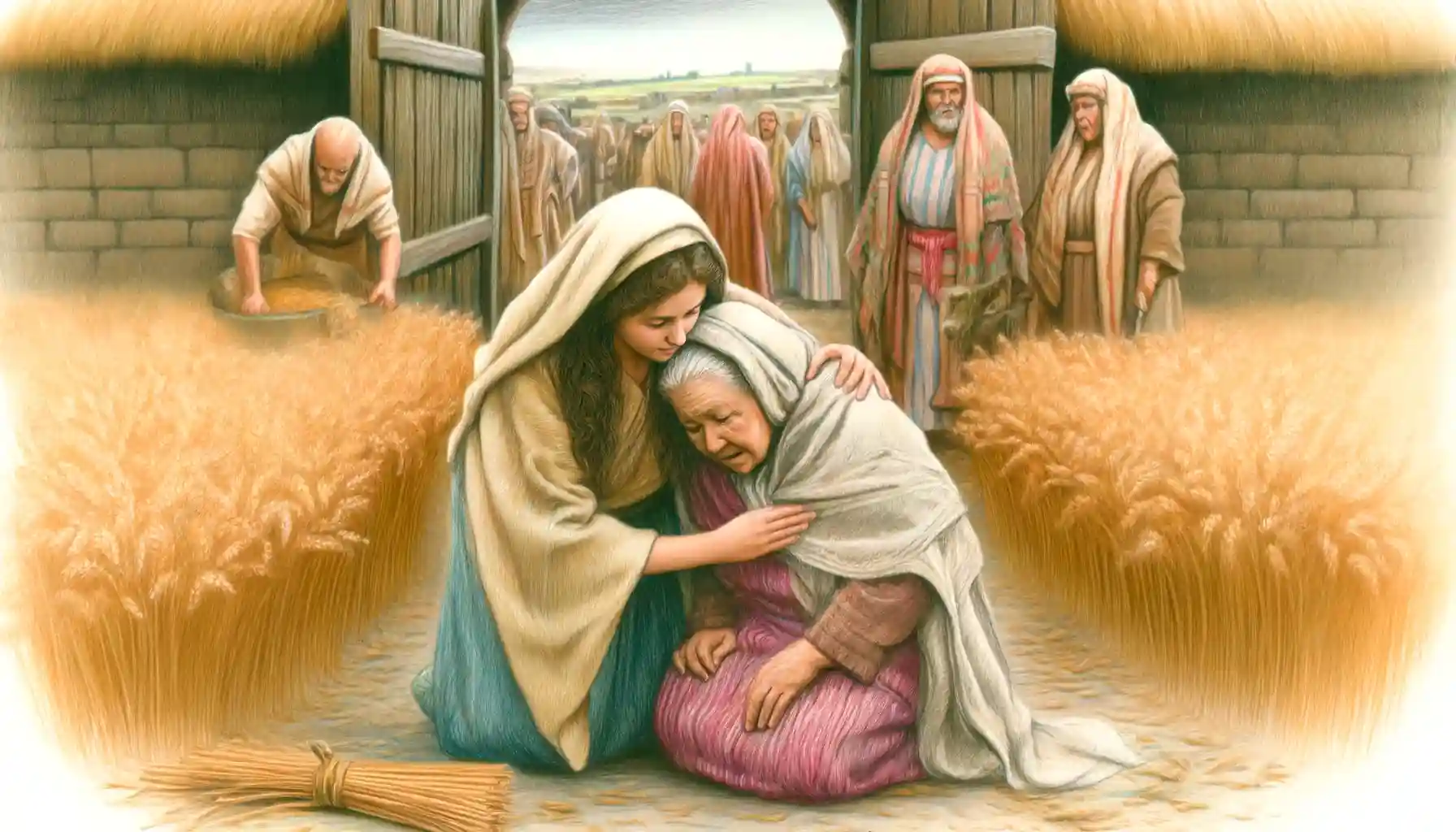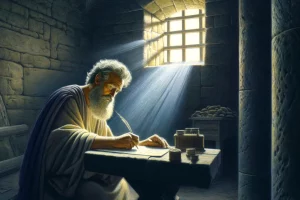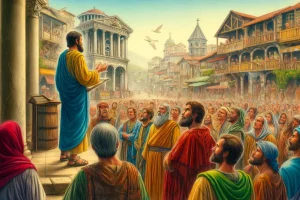
The Book of Ruth
The Book of Ruth is a poignant narrative in the Hebrew Bible and Old Testament, celebrated for its themes of loyalty, kindness, and divine providence. Here are some quick key facts about the Book of Ruth:
- Title and Position: Named after its main character, Ruth, the book is placed between Judges and 1 Samuel in the Christian Old Testament and in the Writings (Ketuvim) section of the Hebrew Bible.
- Authorship and Date: The author of Ruth is unknown. It is traditionally believed to have been written during the time of King David, around the 10th century BC, although some scholars suggest a later date during the post-exilic period.
- Structure and Content: The book is brief, consisting of only four chapters, and can be divided into several key scenes:
- Ruth’s Loyalty (Chapter 1): Ruth, a Moabite widow, pledges loyalty to her Israelite mother-in-law, Naomi, and accompanies her back to Bethlehem.
- Ruth and Boaz (Chapters 2-3): Ruth meets Boaz while gleaning in his fields, and Boaz acts as a guardian-redeemer by showing kindness and ensuring her protection.
- Marriage and Legacy (Chapter 4): Boaz marries Ruth, securing Naomi’s family line. Their union ultimately leads to the birth of Obed, the grandfather of King David.
- Main Themes:
- Loyalty and Commitment: Ruth’s devotion to Naomi exemplifies steadfast loyalty and love.
- Divine Providence: The narrative highlights God’s providential care in orchestrating events that lead to redemption and blessing.
- Inclusion and Redemption: Ruth, a foreigner, is integrated into the Israelite community and becomes an ancestor of David, symbolizing the inclusivity of God’s plan.
- Theological Significance:
- The story of Ruth is often seen as a microcosm of the Bible’s larger themes of redemption and the inclusive nature of God’s covenant.
- Ruth’s lineage is significant in Christian theology as it connects to the genealogy of Jesus Christ, emphasizing the theme of redemption extending to all nations.
- Modern Relevance: The Book of Ruth resonates today with its messages about kindness, the strength of family bonds, and the unexpected ways God works through ordinary lives.
The Book of Ruth is a compact yet profound narrative embedded within the Hebrew Bible and the Christian Old Testament. It provides a rich tapestry of themes such as loyalty, providence, and redemption through the story of its main characters—Ruth, Naomi, and Boaz. Here is a detailed analysis of the Book of Ruth, exploring its structure, content, major themes, and theological implications.
Structure and Content
1. Ruth’s Loyalty to Naomi (Chapter 1):
- The story begins in the time of the judges, a period of social and moral turbulence in Israel. Naomi, her husband Elimelech, and their two sons move to Moab due to famine in Bethlehem. After the death of her husband and sons, Naomi decides to return to Bethlehem, urging her Moabite daughters-in-law to stay in Moab. Ruth, however, clings to Naomi and insists on returning with her, delivering the heartfelt pledge, “Where you go I will go, and where you stay I will stay. Your people will be my people and your God my God.”
2. Ruth and Boaz in Bethlehem (Chapter 2-3):
- Chapter 2: Ruth goes to glean in the fields during the barley harvest and ends up in the part of the field belonging to Boaz, a relative of Elimelech. Boaz shows kindness to Ruth, instructing his workers to leave extra grain for her to collect.
- Chapter 3: Naomi advises Ruth to seek Boaz’s protection as a kinsman-redeemer. Ruth approaches Boaz at night on the threshing floor, requesting he take his duty as redeemer. Boaz agrees, praising Ruth’s loyalty and virtue.
3. Resolution and Legacy (Chapter 4):
- Boaz convenes a meeting at the town gate to address the matter of redeeming Elimelech’s land and marrying Ruth. Another closer relative declines the role, allowing Boaz to marry Ruth legally. Their marriage restores Naomi’s family line and Ruth gives birth to Obed, the grandfather of King David, establishing the Davidic line that leads to Jesus Christ in the New Testament.
Major Themes
1. Loyalty and Devotion:
- Ruth’s unwavering commitment to Naomi is a central theme, reflecting a profound sense of loyalty and love that transcends national and ethnic boundaries.
2. Divine Providence:
- The narrative underscores God’s providential care in orchestrating seemingly coincidental events—from Ruth gleaning in Boaz’s field to the resolution at the town gate—suggesting that God’s purposes are worked out through ordinary human actions.
3. Redemption and Inclusion:
- Boaz’s role as a redeemer for Naomi’s land and family extends to Ruth, a Moabite, symbolizing God’s inclusive plan for all peoples. The genealogy tying Ruth to David and ultimately to Christ highlights a redemptive purpose that crosses ethnic and cultural lines.
4. Social Justice:
- The laws regarding gleaning and redemption practices reflect social justice principles in Israel, aiming to care for the poor and the foreigner among them.
Theological Significance
The Book of Ruth offers a counter-narrative to the often tumultuous and negative stories from the period of the judges. It highlights the values of fidelity, righteousness, and kindness in the context of personal relationships and community obligations. For Christians, Ruth is seen as a forerunner of the New Testament themes of redemption and the inclusive nature of the Gospel.
Conclusion
The Book of Ruth, with its deep emotional and spiritual resonance, invites readers to reflect on the nature of God’s guidance, the importance of faithful love, and the inclusive scope of redemption. It is a testament to the impact of righteous acts and the profound belief that God’s purposes are often fulfilled through the humble and the ordinary, making it a timeless narrative of human dignity and divine orchestration.
Tag:barley harvest, Bethlehem, Biblical Narrative, Boaz, Book of Ruth, cultural integration, divine providence, Faithfulness, family lineage, genealogy, gleaning, inclusion, intercultural relationship, kindness, King David, kinsman-redeemer, loyalty, Moabite, Naomi, Old Testament, Redemption, Ruth, Social Justice



